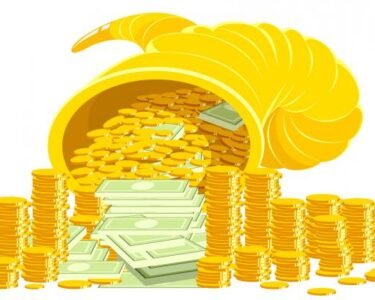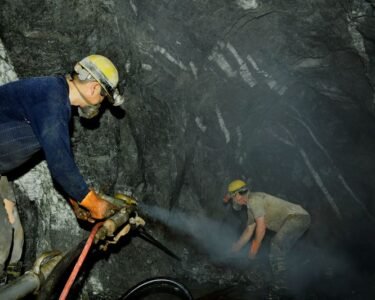1
Where did this idea come from?
On February 3, U.S. President Donald Trump announced that he plans to negotiate an agreement with the Ukrainian authorities that would link American military and financial aid to Ukraine with the supply of rare earth metals “and other things” to the United States. “We’re putting in hundreds of billions of dollars. They have great rare earths. And I want security of the rare earths, and they’re willing to do it,” he said.
Trump did not provide any details about potential agreements. However, officials in Ukrainian President Volodymyr Zelensky’s administration responded positively to the proposal. One anonymous senior Ukrainian official told The New York Times that U.S. security guarantees could help Kyiv protect valuable natural resources from being seized by Russia. Another source close to Zelensky told The Financial Times that Trump’s proposal aligns with the “victory plan” that the Ukrainian president presented to Kyiv’s Western partners in 2024.
Ukraine holds vast natural resources, including critical minerals worth trillions of dollars. These include uranium, titanium, lithium, graphite, and other strategically important materials that could strengthen either Russia and its allies or Ukraine and the democratic world.
Ukraine proposes that the United States, along with certain partners — particularly the European Union, which Ukraine will join — sign a special agreement for the joint protection of these critical resources, co-investment, and economic cooperation to harness their full potential.
2
What are rare earth metals, and which ones does Ukraine have?
Rare earth metals (REMs) are a group of 17 chemical elements, all of them silvery-white metals with similar chemical and some physical properties. They’re called “rare” because they are relatively uncommon in the Earth’s crust (though not necessarily rarer than some other metals) and form refractory oxides that are virtually insoluble in water, historically known as “earths.” REMs are used in electronics, precision instruments, nuclear technology, engineering, the chemical and petroleum industries, metallurgy, and numerous other sectors. Their wide range of applications makes them highly valuable and in demand among leading global economies.
However, Ukraine is not among the countries with the largest known REM deposits (though it does have undiscovered reserves, the largest of which lie in Russian-occupied areas of the Luhansk and Donetsk regions). It’s likely that Trump’s plan extends beyond just REMs to other raw materials classified as critical for U.S. economic and national security. This broader list includes several dozen strategic minerals, and Ukraine has a lot to offer in this regard, with abundant deposits of rare but non-REM metals. Here are two key examples:
- Lithium. Ukrainian scientists estimate that the country’s reserves of this valuable lightweight metal — essential for the electric vehicle industry and many other advanced sectors — amount to half a million tons. However, since lithium extraction in Ukraine has yet to begin and not all reserves have been fully surveyed, organizations like the U.S. Geological Survey (USGS) don’t currently list Ukraine among the countries with the largest deposits. If the half-million-ton estimate is confirmed, Ukraine could rank among the world’s top 20. Open sources also cite claims that, according to Ukraine’s State Service of Geology and Subsoil, the country’s lithium reserves amount to three percent of the global total. Given that the USGS estimates global reserves at 105 million tons, this could mean more than three million tons, potentially placing Ukraine in the world’s top seven. Still, significant obstacles stand in the way of tapping these reserves — above all, Russia’s ongoing invasion. The Russian military has approached Ukraine’s largest lithium ore deposit, the Shevchenko field in the Donetsk region, which holds an estimated 13.8 million tons (the head of the self-proclaimed “Donetsk People’s Republic,” Denis Pushilin, even prematurely claimed it had been seized). The deposit in Kruta Balka is already under Russian control. Two other key surveyed deposits — Polokhivske and the Dobra site — are located in the relatively secure Kirovohrad region. However, there have been no precise assessments of the quantity and quality of the raw materials in these areas.
- Titanium. Even before Russia’s full-scale invasion, Ukraine was a significant player in the market for this lightweight yet durable metal, widely used in civilian and military technology and other industries. In 2021, Ukrainian ilmenite — one of the primary titanium-bearing ores — accounted for about five percent of global ore production used for titanium manufacturing. In 2022, the country’s exports dropped by more than 40 percent. Some deposits ended up in occupied territory, while major enterprises sharply reduced or even halted operations due to the threat of Russian strikes. Despite this, Ukraine remains one of fewer than ten countries that produce titanium sponge — the base material for titanium. This production takes place at the now-nationalized Zaporizhzhia Titanium-Magnesium Plant, which was seized from businessman Dmytro Firtash, who has since been sanctioned by Ukraine and is wanted in the U.S. Another major state-owned producer, United Mining and Chemical Company (UMCC), was privatized in October 2024, bringing nearly $100 million into the state budget after being acquired by a structure linked to Azerbaijani investor Nasib Hasanov. Ukraine has identified around 80 titanium deposits, but only half have been surveyed, and mining is conducted at just 10 percent of explored reserves. The USGS estimates Ukraine’s share of global ilmenite and rutile reserves at just over one percent. However, some Ukrainian entrepreneurs and scientists have cited much higher figures — up to 20 percent — without publishing their methodology.
This list is far from exhaustive. Ukraine also has deposits of graphite, uranium, manganese, zinc, lead, cobalt, and many other valuable resources — not to mention more abundant natural resources like coal and iron ore. Estimates suggest the total value of Ukraine’s reserves ranges from $15 trillion to “tens of trillions” of dollars. However, most of these resources lie in occupied areas of Donetsk and Luhansk regions. With the war currently favoring Russian forces, accurately assessing Ukraine’s resource potential remains difficult.
3
Would the U.S. really invest in Ukraine amid the war?
The “aid-for-resources” concept, despite the costs and risks associated with war, appears potentially advantageous for all sides. Trump won the election while criticizing the Biden administration’s “free” aid to Ukraine. His agenda prioritizes “efficiency” in foreign policy — or at least the appearance of it — and a model where Washington “recoups” part of its arms supply investments through imports of valuable metals fits this strategy well. At the very least, Trump’s voter base may welcome the shift away from what their candidate has framed as a waste of taxpayer money — or rather, the rebranding of those expenditures as one of the president’s signature “deals.”
A second key reason for Trump’s interest is strengthening America’s position in global competition with China. It’s no coincidence that he’s repeatedly pushed the issue of expanding the rare earth metals supply — he used the same reasoning to argue for the U.S.’s annexation of resource-rich Greenland. China holds nearly half of the world’s known rare earth reserves. Meanwhile, according to the Pentagon, magnets made with these metals are essential components in every American F-35 fighter jet, Arleigh Burke-class destroyer, and Virginia-class nuclear submarine — not to mention Tomahawk cruise missiles, drones, guided bombs, and many other types of weaponry.
Over the past five years, the U.S. Department of Defense has spent nearly $440 million on securing “friendly” imports of rare earths and boosting domestic extraction. Expanding these supply chains with additional shipments from Ukraine — especially if American investors control the raw material production — would be a logical move from a geopolitical standpoint. The same logic applies to lithium (before the full-scale war in Ukraine, China even sought entry into Ukraine’s lithium sector), titanium (where U.S. manufacturing capacity is limited, making it heavily dependent on Chinese imports — and, until 2022, on Russian supplies), and other critical rare metals.
Trump’s proposal is a small victory for Zelensky as well. First, even if framed as a “deal,” the agreement would be a clear commitment from the new U.S. president to continue military and financial aid. Second, Trump has effectively endorsed one of the key points in Zelensky’s own “victory plan.” The Ukrainian president himself confirmed that back in September 2024, during a meeting with Trump, he expressed Kyiv’s openness to allowing “all of this”(meaning rare earth metals and other natural resources) to be “developed by partners who help defend Ukraine and push back the enemy with their weapons, presence, and sanctions.”
According to The New York Times, Ukraine had originally planned to sign a cooperation agreement on mining and mineral processing with the Biden administration. However, Kyiv ultimately decided to hold off — a clear signal to Trump’s inner circle that it was willing to offer the deal to the new White House instead.
In December, a Ukrainian government delegation held a series of meetings with American business leaders in Washington, presenting specific proposals for purchasing mining licenses for critical minerals, either directly or through partnerships with existing license holders. At the same time, however, these deals still hinge not only on negotiations with potential investors but, above all, on the success of Trump’s efforts to broker peace.
Sign up for Meduza’s daily newsletter
A digest of Russia’s investigative reports and news analysis. If it matters, we summarize it.




